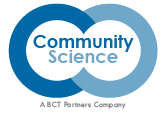What makes the Y a staple in the community?
For almost 180 years, the Y has been a staple in communities across the country. The Y provides a place for people to improve their health, make connections, and become inspired to act on issues that concern them. As such, the Y helps to strengthen communities across the country, ensuring that everyone has the opportunity to become healthier, more confident, connected, and secure.
The Y was there for me during a very stressful time in my life. As a military spouse whose partner was deployed two months after being married, imagine my surprise when my husband’s Family Readiness Group offered me a Y membership as a way to maintain my mental health during his absence. My husband was a reservist, not an active-duty soldier, which meant that I didn’t live on a military base where there were other families who understood what I was going through at the time. I felt alone and that Y membership provided me with a place where I could take care of my mental and physical health during his 10-month deployment.
The Y also is a go-to resource for many community-based organizations. The Y is a trusted institution in the community that has helped to improve many lives by building minds and bodies everywhere. With its reputation and influence, the Y remains the go-to organization to collaborate or engage with when the goal is to improve the community. The following summarizes how the Y has continued to remain a staple in ten communities around the country, based on a study Community Science conducted with the YMCA of the USA (Y-USA), funded by the Robert Wood Johnson Foundation. The study explored whether and how Ys accelerate local strategies that foster fair and just opportunity and contribute to building and sustaining community strength.
1. A reputable, trusted institution
Community partners of ten Y sites across the country overwhelmingly praised the Y for its positive reputation in the community. Most importantly, this positive perception did not waver during the pandemic. In all ten sites, partners described how residents and community-based organizations trust the Y in their community. During the pandemic, partners in three of the sites described how the Y worked to meet community needs beyond the “gym and swim” role they typically play—this only helped to strengthen their reputation even more. For example, the work of the YMCA of Greater Seattle around youth homelessness prevention increased its visibility and contributed to its positive reputation among state and local policymakers.
2. An influence on other organizations in the community to varying degrees
Partners of the Ys had mixed opinions about the extent to which the YMCA influenced their thinking regarding creating fair and just opportunities. In all 10 sites, about a third to just over half of partners reported that their relationship with the Y had expanded their view of what constituted a fair and just opportunity, creating a more holistic view of health and wellness that goes beyond physical health. The remaining partners were already familiar with issues of fairness and justice and therefore, the Y had little to no influence on their thinking.
3. Responsive when the community is in need, contributing to a stronger community
The Ys and their partners across all ten sites noted that their work strengthened their communities by increasing access to opportunities and resources for disadvantaged or vulnerable groups. In six sites, Ys and partners also felt that their work improved relationships and connections between community members and larger institutions. For example, the work of the Greater Seattle YMCA and its partners created spaces for youth to come together, build relationships, and elevate shared values and issues. The activities of the Gateway Family YMCA and its Shaping Elizabeth partners provided a critical connection between community members, local service providers, and city government. In three sites, Ys and partners also felt that their work strengthened the sense of community among residents engaged in the efforts. For example, the work of the Greater Joliet Area YMCA and its partners fostered a sense of belonging and commitment to the community among local youth participating in their program.
In summary, the Y has maintained its status as a staple in the community through its reputation, dependability, and influence on community members and community-based organizations. These three attributes will enable the Y to continue being a pillar of strength in communities for years to come. My personal experience with the Y affirms this!
